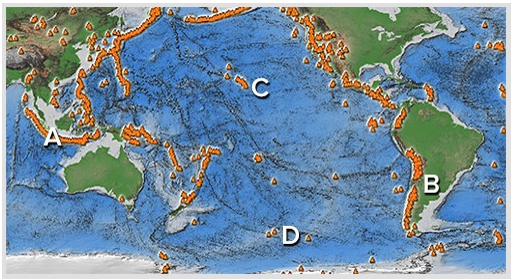Describe the pattern of average temperatures as you travel from west to east at 50°N in January and 40°N in July. Where are temperatures higher/lower? Contrast temperatures over the land and over the oceans.
a) January:
b) July:
a) January: Temperatures over the Eastern Pacific are warmer than over North America. The same pattern repeats over Eurasia with warmer temperatures over the oceans and colder temperatures over the land.
b) July: Temperatures over the Eastern Pacific are cooler than over North America. The same pattern repeats over Eurasia with cooler temperatures over the oceans and warmer temperatures over the land, with the exception of the much cooler Tibetan Plateau.
You might also like to view...
Make a rough sketch of North America and indicate approximately where the following climatic types would be found: tropical moist climatesmoist subtropical climates dry climatesmoist continental climates polar climateshighland climatesList the principal characteristics of each climate type, and describe the climatic controls that influence the location of each climatic region shown on your map.
What will be an ideal response?
Which of the following sites has volcanoes related to subduction? A is on an island arc, B is in the Andes, C is near Hawaii, D is along a midocean ridge.

A) A and B
B) B and C
C) C and D
D) A and C
E) B and D
As the population and economy has grown since 1990 in the United States, the weight per person of MSW produced has
A) declined sharply. B) increased sharply. C) stayed about the same. D) declined in the 1990s but nearly doubled since the year 2000.
What is the value, to a species, of having genetic diversity?
What will be an ideal response?